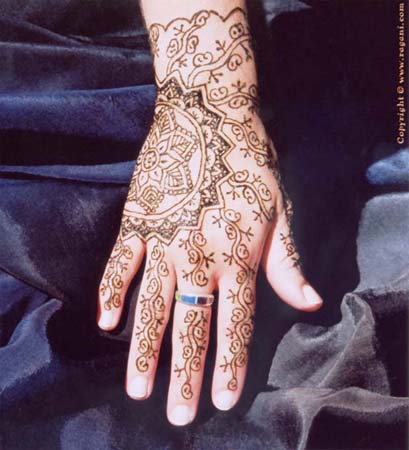|
|
|
|
Henna is the Persian name for Lawsonia inermis, a bushy, flowering tree, that was originally found in Australia, Asia and along the Mediterranean coasts of Africa. Henna ceremonial painting is considered sacred work and a form of worship in many diverse cultures in India, Africa, and the Middle East. Mehndi is the Indian name for the plant and the body art associated with its use. Intricate designs were painted on new brides and as part of the marriage ceremony in India. It is associated with the transition into womanhood and a celebration of marriage. It features prominently in some ancient tales, including as warn by Parvati, Lord Shiva's wife, to charm her difficult to please husband. In Morocco henna is considered magical and is used in the transformation of man and woman into husband and wife. More recently this form of body art has become popular with people all over the world, including celebrities, which has helped make it hip and bring it into the mainstream for men, woman and children alike. |
 |
|
“The earliest evidence of the cosmetic use of henna is from ancient Egypt. It was common practice among the Egyptians to dye their fingernails a reddish hue with henna, and it was considered ill-mannered not to do so. Traces of henna have been found on the hands of Egyptian mummies up to five thousand years old.” Mehndi : The Timeless Art of Henna Painting, Loretta Roome |
|
